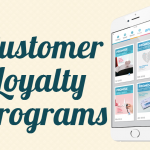How Competitor Analysis Can Improve Your Next Email Campaign
Competitor analysis is a stellar strategy that will help you improve your own campaigns, learn from others’ mistakes instead of your own, and improve communication with your customers. On top of that, it will also help you find new audiences that you may be missing out.
A successful competitor analysis takes into account brands that operate within the same industry and are successful in their own right. To add a zest to your campaigns, include the brands whose campaigns you find inspiring.
The important thing to remember is that friendly competition is a good thing for a brand. It helps it grow alongside its customers and evolve to always meet their demand. That being said, keeping an eye on competitors’ offers is crucial, as you will want your products and services to remain evergreen, in demand, and more appealing than similar ones offered by competing businesses.
Competitor analysis is best used to learn from other businesses. That there is a lot to learn is a no brainer. Merely one email speaks volumes about the manner in which the sender addresses its customers. As time goes by, you will learn, in an effortless way, might we add, how often successful brands are engaging with their customers, how they are positioning their products, and what kind of special deals they offer.

What Can Be Learned from Competitor Analysis
On top of the above-mentioned, competitor analysis will show you which aspects of your campaigns you can improve and how. Ultimately, you should aim at bringing communication to the next level thus steadily getting closer to becoming a leader in the industry.
How exactly is competitor analysis performed?
The first step would be subscribing to competitors’ newsletters. Contrary to popular belief, it is not sufficient to just read them and compare them to yours. Competitor analysis is a process that takes time. Create a spreadsheet where you’ll track multiple factors, including promotional value, content quality, communication style, discount value and its time limit, email frequency and segmentation.
All these stats will help you learn something both about the competition and about the audience. Ideally, you’ll be able to come up with additional sub-groups you might have originally missed.
Email Design

Design is as important in email marketing campaigns as it is in the matter of product packaging. An email that is untidy and not pleasant to the eye will not attract much attention, regardless of the quality of its content and the offer. Still, that doesn’t mean that you should copy competitors’ ideas should their emails happen to be tidier and better designed. Rather, draw inspiration from them and come up with your own unique approach.
When it comes to email design, it is important to keep in mind that there are some limits. Scilicet, the majority of emails are being accessed on mobile devices, which is to say that, in order for them to get the chance to get the message across, they should not be image-heavy and otherwise lengthy and untidy. Think in terms of travelers accessing their inbox on poor bandwidth.
Email optimization is a stand-alone topic in its own right, so we’ll not dive deeper here. Suffice it to say that smaller images are preferred and that fonts should be user-friendly and consistent. Using multiple fonts is not recommended. If your competitors are doing it, there’s your chance to stand out.
As regards the images, try to choose relevant ones that are not too similar to competitors. It’s a well-known fact that images attract attention first. If possible, choose a different motive altogether, as this will definitely make your emails stand out from other similar offers.
Email Content and Subject Lines
Subject lines are the first thing the recipient sees. Based on its brevity and clarity, the fate of your email is decided. Subject lines must be descriptive, short enough as to not be cut (check this on multiple devices before sending an email; iPhone and Gmail are two most frequently used options). Most successful subject lines feature a keyword, but this is not set in stone. If you can go without, that’s fine, too.
Next on, email content should be:
- Literate
- Concise
- Continually on topic
- Clear
- Easily scannable
People tend to scan emails rather than read them, and that’s where keywords fit in. Use competitor analysis to determine which keywords work for them and try to come up with your own based on your research.
Stellar content means that the offer is described plainly and yet eloquently, and that it naturally follows up on the subject line.
Last but not least, there’s the matter of CTAs. A good CTA stands out from the rest of the content. Either it’s a different font color, a larger font size or both, or it is a button (again – in different color). The text is crucial, though. Generic text is never a good idea. CTAs should state clearly what will happen when the recipient clicks on the button, otherwise you run the risk of your emails being flagged as spam.
Compare Offers
Presumably, competition has a similar offer to yours, which means target audiences are, more or less, of the same time. The “less” part is what you should focus on. Use competitor analysis to study sub-groups you might have missed to target originally.
Also, mind how your competitors go about personalization. How do they address their customers? Are they missing out on some aspects you aren’t (e.g., thank you messages and shopping cart reminders)? Is their communication style consistent with their brand identity?
These feats are no less important than the actual offer. No one reads what a marketer markets if they don’t know how to communicate.
The actual offer should be compared in two ways: types of special offers (discounts, promotions, coupons, etc.) and time-limits before their expiration. E.g., if your competitors time-limits are too short, you may outdo them by offering sales that last longer.
Using Insights

Normally, the best way to go about improving your campaigns using the insights from competitor analysis would be to put yourself in customers’ shoes. Why would they choose your offer over competitors’? Do you offer cheaper shipping? Longer sales? Faster responses? Better quality products? Have more payment options? Send receipts? Keep up with customers? And anything else that might come to mind.
The whole point of competitor analysis is to learn what you are missing out on, find out some added value to offer and stand out in the fields that competitors are overlooking. As stated above, competitor analysis is a continual process, but it definitely pays off.









![OnePlus 6: Journey to 6 [Infographic]](https://technofaq.org/wp-content/uploads/2018/05/One_Plus_Journey-01-1-150x150.jpg)






